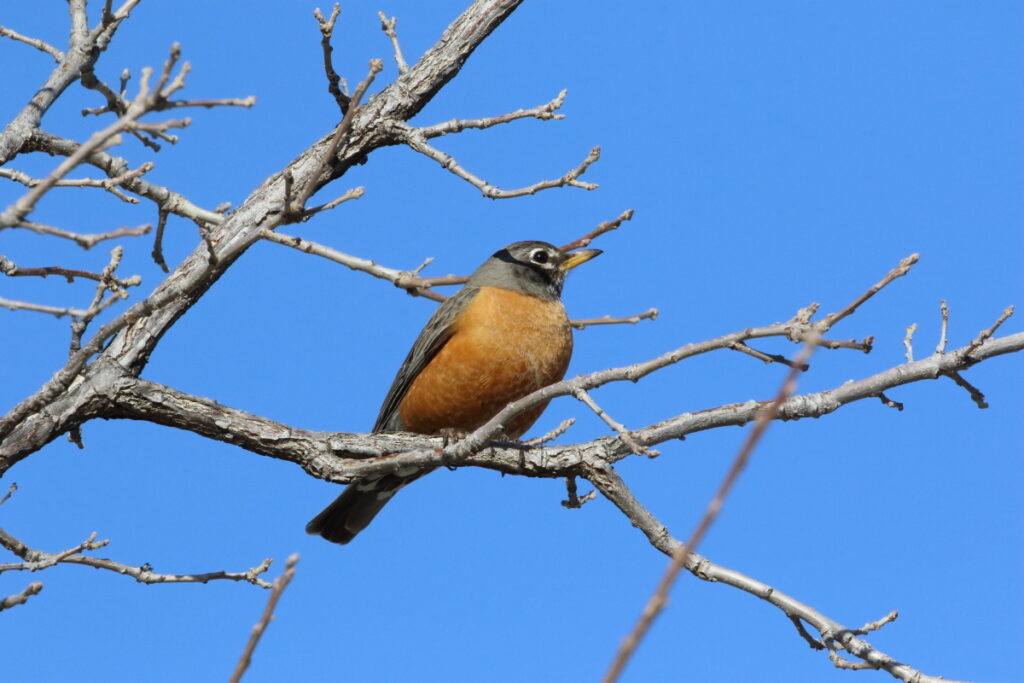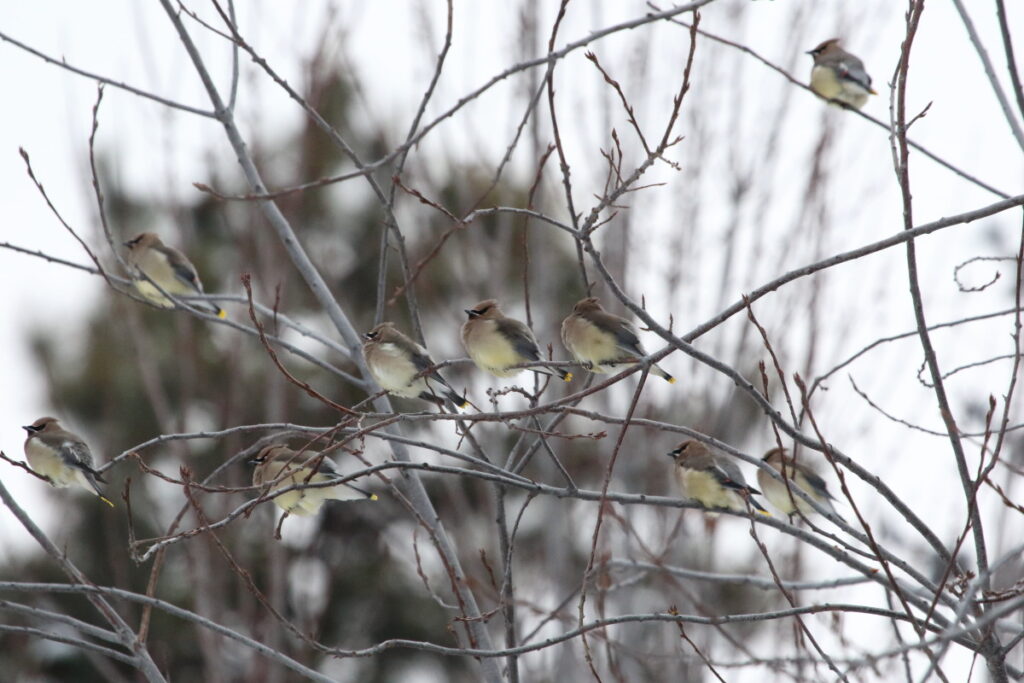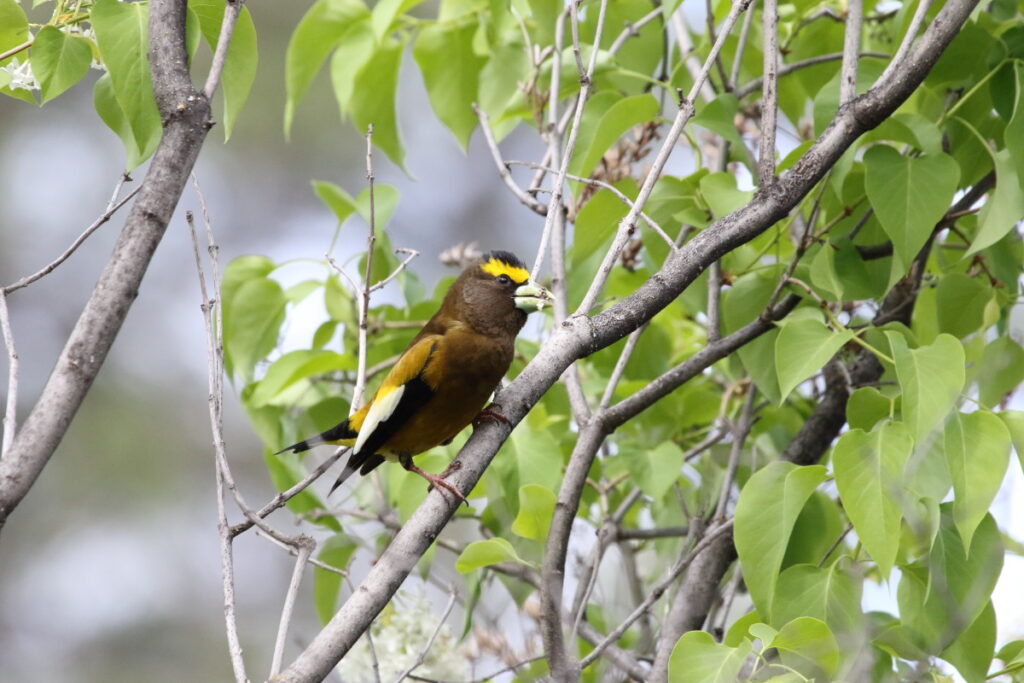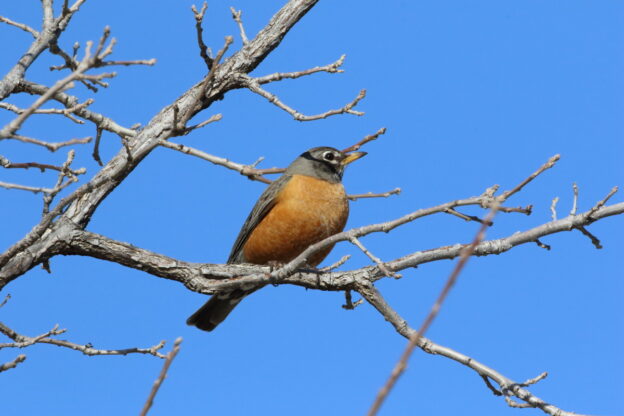This time of year we observe a remarkable influx of American Robins in western Montana. True, the birds are year-round residents in small numbers through much of the state, but by April, instead of spotting the occasional bird, Braden and I begin counting them by the dozens. As much as I love this “thrush flush”, I have to admit it has led to some close calls in bird IDs this past week.

Every morning I grab my binoculars when I head out to take our dog Lola for her morning tramp around our neighborhood. We follow a mile-long route around a school, down to a park, and then back up home, skirting the edges of houses, woods, and Rattlesnake Creek. Over the years, Braden and I have compiled a healthy bird list for the route, but I have to say that it rarely yields any real surprises. As a result, I become lulled into a sense of complacency about what I am looking at.
To wit, with all the robins around lately, I have naturally assumed I am looking at Turdus migratorius when I see medium-sized, nondescript birds perched in a distant tree. On my Wednesday dog walk, I again made those assumptions. I mean, there were a ton of robins about and I identified many by sight and sound. When I saw fifteen birds sitting in another tree, I thought, “More robins.” Fortunately, something made me pause—perhaps my inner birder conscience or a feather that didn’t look quite right. Ignoring Lola’s piercing eyes, which pleaded for me to throw the ball again, I raised my binoculars and found . . .

Cedar Waxwings! “Huh,” I thought. “That’s cool.” Waxwings weren’t earth-shattering, but I didn’t expect to see such a group this time of year. I threw the ball for Lola and continued walking, and a hundred yards later saw another group of birds in a tree. “More robins,” I thought, then remembered the waxwings and again raised my binoculars to find . . .
Evening Grosbeaks! Even better, it was my first good look at them for the year! Those two back-to-back sightings taught me a valuable birding lesson: never assume what you’re looking at just because certain birds are more common or you’ve seen them before. I hope it’s a lesson that will serve you well this spring—not that there’s anything wrong with robins.



Lovely post, Sneed.
Thank you, Tina! Hope all is well 🙂
First off, the title gripped me- “Presume Not the Common Robin.” I knew I was due to a cautionary tale and I braced myself for an expected thrashing because I am always prepared for people to discover that I have done wrong. “Lulled into a sense of complacency”. Oh-hoho, I’ve done that a few times over the last decade. I should have known better. “I hope it’s a lesson that will serve you well.” Yessir, absolutely, I will keep it in mind, sir. But for me, its not the Robin but the Brown Towhee, especially the female, that leads me astray. So readily, so easily. I feel so ashamed…
As always, great photos.
Dear Scott, you correctly surmised that I wrote this with you expressly in mind as only I know all of your dark secrets—including those related to the Brown Towhee. And actually, BRTO would actually be an even better subject for this post. For the first 25 years of my life, I assumed that towhees WERE robins, and they still trick me every time I go to California (which I need to do again soon). Anyway, I look forward to looking for towhees AND robins when next we meet!
If I saw that many waxwings that would be earth shattering! Aren’t they lovely:))) They look chubby like the are all fluffed up for the cold.
Yes, they are uber cute. I’ve never NOT loved seeing them 🙂